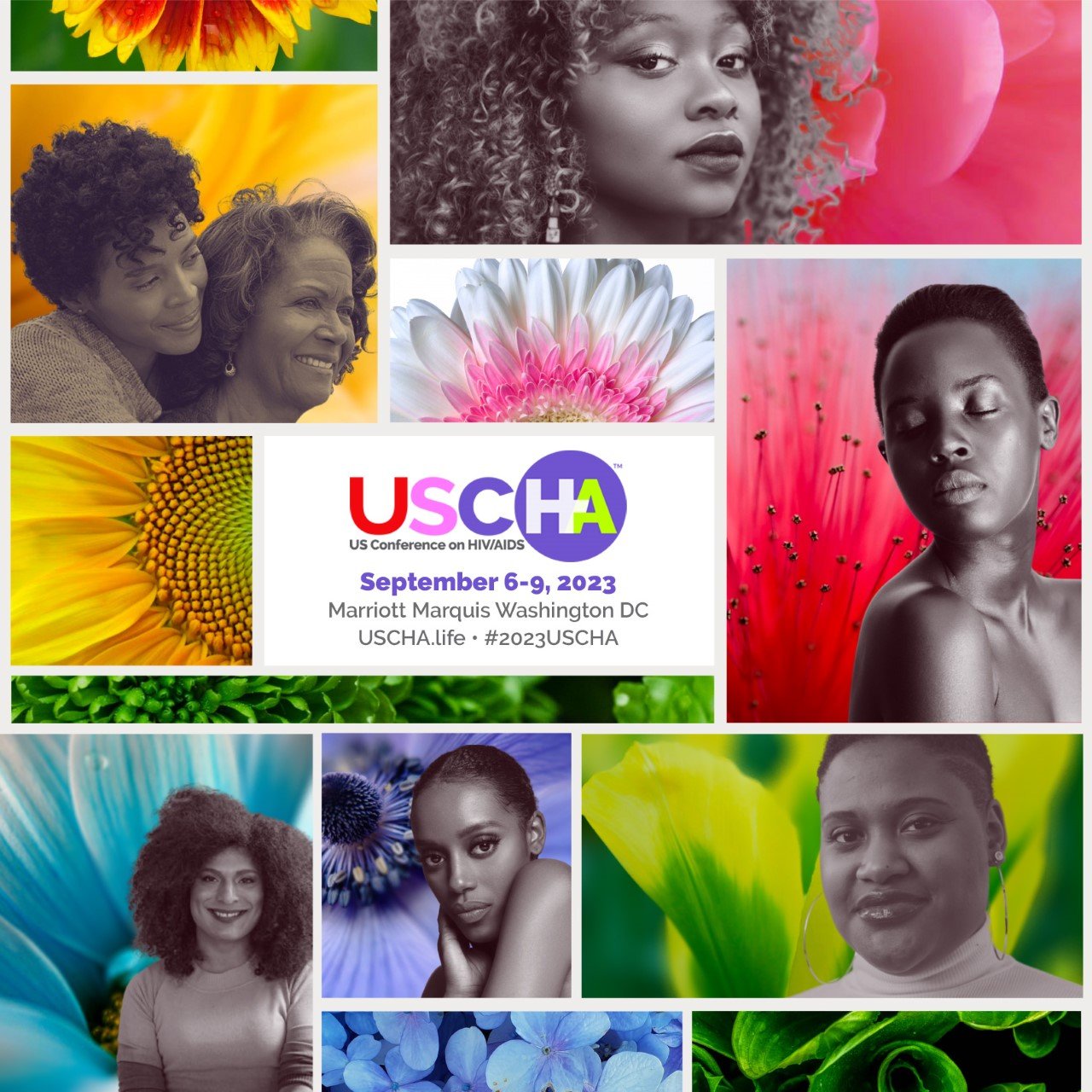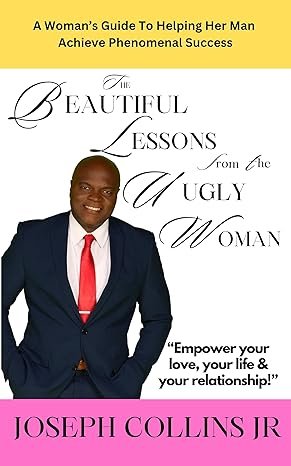Community News
Day 3 – 2023 USCHA: A Love Letter to Black Women
2023 USCHA: A Love Letter to Black Women. When more than a couple of Black women get together, this powerful mechanism for change is created.
Published
2 years agoon

Day 3 – 2023 USCHA: A Love Letter to Black Women. Day 3 began with the presentation “Living Positively: Redefining HIV Care for the 50+ Community” following morning worship. It centered on Gilead’s HIV Age Positively Initiative and the programs and services developed by national, state, and local organizations across the United States to improve the health and quality of life of people living with HIV who are 50 and older. The presentation highlighted the population’s unique needs and challenges, such as stigma, ageism, and co-morbidities.
Day 3: Friday, September 8, 2023
Living Positively

PICTURE: By 2030, up to 70% of people with HIV will be over the age of 50. Gilead Science’s “HIV Age Positively” aims to support programs focused on improving the quality of life and health for those who are aging. PHOTE: COURTESY OF: Gilead Sciences, HIV Age Positively.
It was very humbling and awe-inspiring to sit in a room surrounded by long-time survivors of HIV, as this population sector did not expect to still be among the living. After all, HIV was considered a “death sentence” 40 years ago. HIV is no longer a “death sentence.” Long-term survivors are proof of this.
HIV & Aging
People aged 50 and up, many of whom have been living with HIV for decades, have become a large and growing population as treatment advances.
“48% of people living with HIV are in the 50+ community,” said Elena Hampton-Stover of Professional Association of Social Workers in HIV/AIDS (PASWHA). PASWHA, as leaders in the field of HIV Social Work, strives to end the HIV/AIDS epidemic by promoting social justice and equity through all forms of social work practice.
Professional topics of interests and discussion during the Living Positively: Redefining HIV Care for the 50+ Community session included HIV and aging and Gilead’s response to this growing community in HIV treatment and care.
With regards to HIV and aging, the session discussed the prevalence of HIV in older adults, trends in PLWH who are aging, and key demographic insights.
The discussion pertaining to the trends in PLWH who are aging included a shifting age demographic, longevity and treatment, and challenges faced.
The key demographic insights discussion included gender and age disparity, racial and ethnic considerations, and socioeconomic factors.
Gilead Sciences Response
Those who lived through the early days of the HIV epidemic recall the generation we lost and the lasting impact it had on our community.
We’ve made tremendous progress since then. For the first time, nearly half of HIV patients in the United States are over the age of 50. Their stories are a powerful reminder of the heroic efforts of all who have made these advances possible.
More critical work must be completed. Aging with HIV brings with it new and unique challenges for those affected by the epidemic as well as the healthcare system as a whole. More than 80% of HIV-positive people will have at least one age-related medical condition by 2030, such as cancer or heart disease — an underexamined, underappreciated, and underfunded public health issue that requires immediate attention.
People living with HIV have special needs that not all providers can meet. Aging with HIV affects a person’s whole life, not just their health. HIV affects a person’s entire life, not just their health. It is not enough to simply provide better care and services on an individual basis to deliver sustainable solutions. We must also fight for systemic change.
HIV Initiatives
To promote transformation change Gilead Sciences supports numerous HIV initiatives.
HIV Age Positively® aims to support programs focused on improving the quality of life and health for those who are aging. HIV Age Positively has awarded more than $17.6 million in grants to 30 organizations ranging from healthcare organizations to advocacy groups addressing the interconnected challenges within the healthcare system and the general HIV community, such as stigma, loneliness, and better care coordination.
ROC4AGING+ is a Gilead Sciences, Inc. national technical assistance provider and an HIV Age Positively initiative. They develop and offer education, training and resources to 23 national, regional and local organizations. These organizations offer program- and policy-related initiatives aimed at improving the health and quality of life of persons aging with HIV.
To advance community collaboration, the Social Change, Innovation and Leadership (SOCIAL) initiative focuses on three areas. The first priority is education. Organizational leaders from eight organizations will form a learning cohort to receive training in social change innovation strategies to improve community collaboration through an Intensive Practice Lab (IPL). The second focus is on application. Our faculty will provide ongoing support to trained leaders as they implement a SOCIAL Innovation Project in their community. The third point of emphasis is on sharing. The project will be completed by the cohort sharing cross-community learnings and setting future goals to sustain their efforts.
Pleasure & Intimacy
“The S Salon Desire, Pleasure & Intimacy: An Experience in Three Acts” plenary session by ViiV Healthcare was a dynamic live show with a supporting multimedia presentation centered on this year’s USCHA conference theme of “A Love Letter to Black Women.” Highlighting ViiV’s longstanding commitment to Black women, The S Salon provides a platform for those who are work with them to change the narrative around women and HIV, reframe risk, and honor the leaders that move the work forward.
In addition to emphasizing ViiV’s commitment to Black women, the plenary spotlighted the cultural and community initiatives they have launched in recent years aimed at Women of Color, and the significance of this work on a local/national/global scale.
Award-winning talent and community partners performed during the session, which featured several keynote speakers from the community and the brand. In addition, a platform was provided for our community partners who are working with us to change the narrative around women and HIV, reframe risk, and recognize the leaders who are moving the work forward.
Leveraging Media Advocacy
I attended the “Leveraging Media Advocacy in the Fight Against HIV Stigma” session after ViiV’s luncheon plenary.
Since 2020, GLAAD has been tracking the State of HIV Stigma in the United States in collaboration with Gilead Sciences, asking key questions each year about Americans’ attitudes and knowledge of HIV, as well as the stigma that exists around the virus and people living with HIV (PLWH).
GLAAD, as a dynamic media force, tackles difficult issues in order to shape the narrative and spark dialogue that leads to cultural change.
While the 2022 State of HIV Stigma Report shows some progress in reducing HIV stigma, there is still work to be done, as the majority of Americans still believe HIV stigma exists and report seeing fewer stories of people living with HIV in the media. According to the 2022 report, nearly 90% of Americans agree that there is still stigma surrounding HIV, and only 31% have seen stories about PLWH in the last year. According to GLAAD’s 2022 Where We Are On TV (WWATV) Report, only eight characters on scripted series were living with HIV.

PICTURE: The 2022 State of HIV Stigma report reveals progress toward easing HIV stigma, through increasing knowledge, comfort, and greater understanding that HIV can be treated to the point of being undetectable and therefore untransmittable (U=U) and the importance of PrEP for prevention. PHOTO: COURTESY OF: GLAAD.
The 2022 State of HIV Stigma Study was conducted in February 2022 via an online survey of 2,536 U.S. adults aged 18 and up. CINT, the world’s largest consumer network for digital survey-based research, sourced and aggregated the sample. The results from 2022 are compared to those from 2021 and 2020, assuming the same question was asked.
The findings document progress against HIV stigma, HIV transmission and prevention, and HIV attitudes and knowledge among people living with HIV in the United States:
- Knowledge of HIV is Stable. Half of Americans believe they are knowledgeable about the virus, and nearly 40% have some knowledge. Since 2020, the figures have remained stable.
- Greater comfort interacting with people living with HIV (PLWH). Since 2020, the percentage of Americans who are comfortable interacting with HIV-positive people has steadily increased.
- Increased understanding of PrEP benefits in preventing HIV. Pre-exposure prophylaxis (PrEP) is one of the most effective HIV prevention strategies. Today, two out of every three Americans believe that there are medications available to protect against HIV infection. Keeping PrEP free or low coat is a long-term need in the fight to end HIV.
- Growing understanding of U=U. There has been a steady decrease in key stigma measures, indicating that HIV affects only certain groups of people. Today, only 32% of Americans associate HIV with drug users, and 33% believe HIV primarily affects LGBTQ people.
- There is not enough visibility of people living with HIV in media. Less than one-third of Americans say they’ve seen media stories about people living with HIV in the last year. This lack of visibility has the potential to perpetuate harmful stereotypes and stigma.
Protecting Our Care
The healthcare system in the United States is fragmented, dysfunctional, and undeniably expensive. Add stigma and discrimination to the list of burdens for people living with HIV in this broken system. Public health programs must step up to fill the gaps in care. Recently, the courts and state legislatures have used health policy to attack the rights of LGBTQ+ people and women. These branches of government have restricted access to reproductive, gender-affirming, and preventive health care. Simultaneously, Congress is pushing austerity measures that threaten to reduce federal funding for public health programs that serve people living with or at risk of HIV.
The workshop “Protecting Our Care: Political Attacks Against Healthcare and Public Health” provided a policy analysis of the healthcare landscape. It also explored the current political threats to funding public health programs across the country. The workshop examined complex threats to healthcare and safety net programs designed to keep people from falling through the cracks.
Beyond Diversity
It is important to have an HIV workforce that reflects the demographics and experiences of those most affected. This includes includes as Black, Latinx, and Indigenous communities. However, how can organizations go beyond simply hiring diverse employees to foster environments in which employees from historically marginalized communities feel a sense of belonging and receive the support they require to succeed and grow as leaders? How can we work to avoid replicating the oppressive systems that our clients face with our own staff?
Concrete, data-driven strategies that AIDS Service Organizations of all sizes can use to improve engagement and retention. Furthermore, it provides sense of belonging among their BIPOC staff were discussed in this interactive “Beyond Diversity: A Data-Driven Approach to Equity, Inclusion, and Belonging” workshop.
Let’s Stop HIV Together
HIV affects certain groups disproportionately more than others. Research shows that those same groups have a higher level of distrust of the government and the medical system. Government agencies and organizations that want to engage these populations must think outside the box.
The national Let’s Stop HIV Together (Together) campaign of the CDC employs evidence-based strategies to reduce HIV stigma. They utilize these evidence-based strategies to promote HIV testing, prevention, and treatment among priority groups, as well. Together have become trusted spokespeople, often connecting with people who do not listen to traditional news or information sources. Because of this, Together wanted to build an evidence-base for working with social media influencers. Recognizing the plethora of factors that could influence government agencies’ engagement with influencers, Together was cautious and thorough. They aligned activations with their other paid and organic outreach strategies to rigorously evaluate impact.
In the “Collaborating With Social Media Influencers to Stop HIV Together” workshop, presenters shared experiences developing guidance for hiring influencers. Additionally, they shared their experiences developing guidance from influencer agencies, vetting influencers, and developing content to maximize efforts.

PICTURE: Hands with red paint placed together to form a heart. PHOTO: COURTESY OF: Unsplash, Published July 26, 2016.
Related URBT News articles: Day 1 – 2023 USCHA: A Love Letter to Black Women, Day 2 – 2023 USCHA: A Love Letter to Black Women, and HIV/AIDS Leaders Gathered on Capitol Hill to #SaveHIVFunding
DOWNLOAD THE URBT NEWS APP Day 3 – 2023 USCHA: A Love Letter to Black Women
You may like
-


Remembering Lamarr Wilson: Tech Community Mourns the Loss of a Guiding Light
-


Ice Spice Lights Up SpongeBob Premiere: A Pop Culture Collision
-


78-Foot Statue of Liberty Replica Collapses in Brazil After High Winds
-


Stacey Dash’s OnlyFans: A Bold Move or Savvy Business?
-


Women Buying Men Drinks: A Cultural Shift in Modern Dating
-


Dalai Lama Controversy: Cultural Context vs. Child Protection


